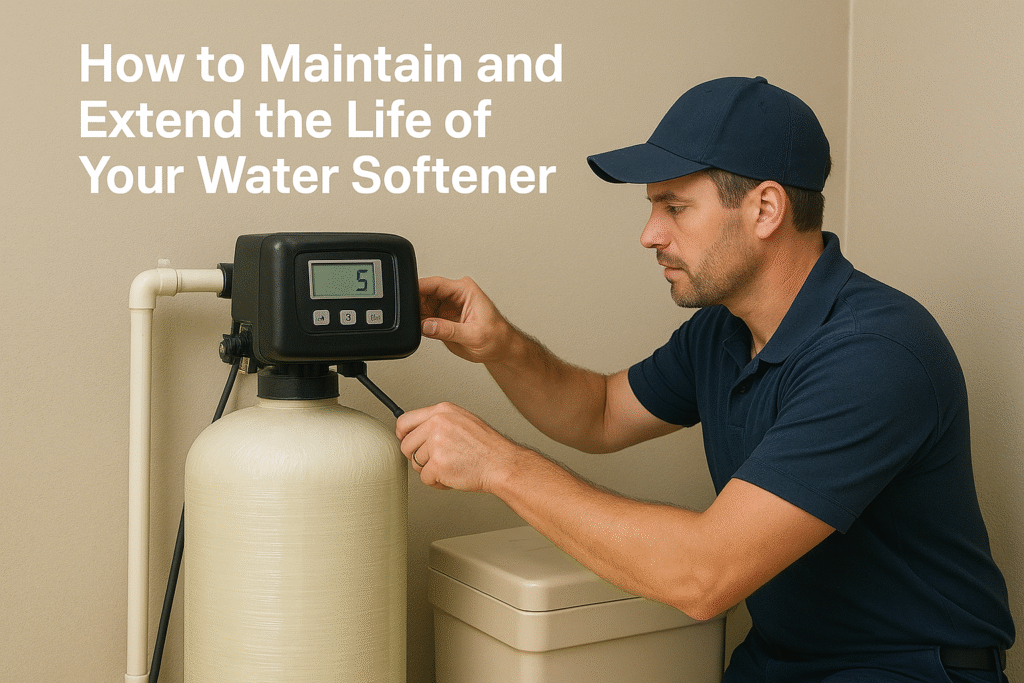A water softener is a vital component in many households, offering protection against the damaging effects of hard water on plumbing, appliances, and even daily comfort. Hard water minerals, such as calcium and magnesium, can cause scale buildup, reduce the lifespan of dishwashers and washing machines, and leave spots on dishes or clothing. A properly functioning water softener resolves these issues by removing excess minerals and keeping water balanced for everyday use. However, just like any household system, a softener requires maintenance to continue performing effectively. Regular care not only ensures optimal performance but also extends the unit’s life, saving homeowners money on repairs or replacements. By understanding how to care for a water softener and taking proactive steps, households can enjoy years of reliable service and improved water quality. Proper maintenance becomes the foundation for long-term efficiency, durability, and peace of mind.
Ensuring longevity through proper care
- Monitoring salt levels and resin performance
One of the most important aspects of maintaining a water softener is monitoring the salt levels. Salt is critical to the regeneration process, where the system flushes out hard water minerals from the resin beads and restores their ability to continue softening. If salt levels drop too low, the resin cannot regenerate properly, resulting in reduced efficiency and hard water re-entering the home. Checking the salt regularly and topping it up as needed ensures smooth operation. It’s also vital to use high-quality salt that minimizes sediment buildup at the bottom of the brine tank, as this can clog the system and reduce efficiency. Over time, the resin beads themselves may lose effectiveness and need to be cleaned or replaced. Taking care of these two components—salt and resin—provides the foundation for long-term performance. Companies like Ideal Response emphasize the importance of preventive care, noting that simple checks can prevent costly breakdowns.
- Cleaning the brine tank and system parts
Over time, the brine tank can accumulate sludge, sediment, and other impurities that interfere with regeneration cycles. Regular cleaning is a crucial step to ensure the water softener continues to function efficiently. Homeowners should empty the brine tank at least once a year, scrubbing away any buildup and rinsing it before refilling with fresh salt. Additionally, other components of the softener, such as valves and injectors, may also collect debris, requiring periodic cleaning. These maintenance steps ensure that water flows smoothly through the system and prevent mechanical strain that could shorten the unit’s lifespan. Ignoring the buildup inside the brine tank often leads to blockages that reduce efficiency and increase the chance of malfunctions. A clean system doesn’t just perform better—it also extends the time before costly repairs or replacements become necessary. By making cleaning part of routine care, homeowners protect both the functionality and longevity of their water softener.
- Checking water pressure and system settings
Proper water pressure is another factor that directly affects the lifespan of a water softener. Excessively high pressure can place unnecessary stress on the unit, leading to leaks or damage over time. Installing a pressure regulator ensures that the system operates within safe limits, preserving its mechanical components. It’s equally important to verify that system settings match the household’s water usage and hardness levels. Incorrect programming can cause the softener to regenerate too frequently, wasting salt and water, or too infrequently, allowing hard water minerals to build up. Both scenarios reduce efficiency and prematurely wear down the unit. Homeowners should periodically check and adjust settings, particularly if household size or water usage changes. By balancing water pressure and fine-tuning system operations, households ensure their softener is not overworked or underperforming. These steps reduce unnecessary strain, preserve resources, and extend the overall life of the system while maintaining reliable water quality throughout the home.
- Scheduling inspections and replacing worn components
Even with consistent care, some parts of a water softener naturally wear out over time. Components such as resin beads, O-rings, and control valves may require replacement after years of operation. Scheduling routine inspections by a qualified technician helps identify problems early before they escalate into major failures. Regular professional checkups ensure the system is operating at maximum efficiency, and they can also uncover hidden issues, such as minor leaks or worn seals. Proactively replacing parts when needed is far more cost-effective than waiting for a breakdown, which can result in water damage or a complete system replacement. Inspections also provide an opportunity to assess whether the system’s capacity still meets the household’s needs, especially if family size or water usage has changed. By combining routine homeowner maintenance with periodic professional oversight, water softeners can operate reliably for well over a decade, providing lasting benefits and consistent water quality.
Read More: https://acubi.us/water-efficiency/
Maintaining a water softener requires consistent attention to details, such as salt levels, resin condition, and system cleanliness; however, the effort pays off in the long term, resulting in improved performance and durability. By cleaning the brine tank, monitoring water pressure, and adjusting settings, homeowners ensure that the system operates efficiently without unnecessary strain. Professional inspections further extend the unit’s life, catching issues before they grow into costly repairs. Each step taken toward proactive care not only protects the investment in the water softener but also preserves the benefits of soft water for the entire household. With regular maintenance, these systems deliver reliable service for many years, preventing the problems caused by hard water and saving money in the process. Extending the life of a water softener is less about complicated repairs and more about consistent, thoughtful upkeep. By following these practices, homeowners secure both peace of mind and dependable performance well into the future.



